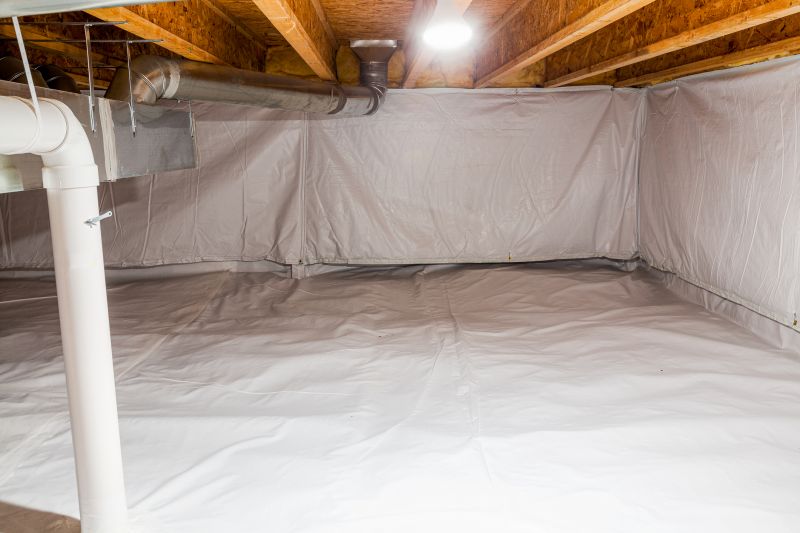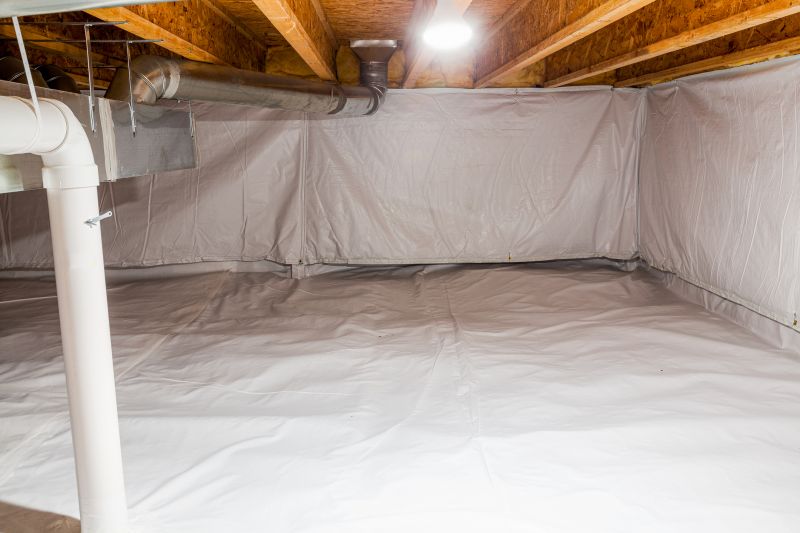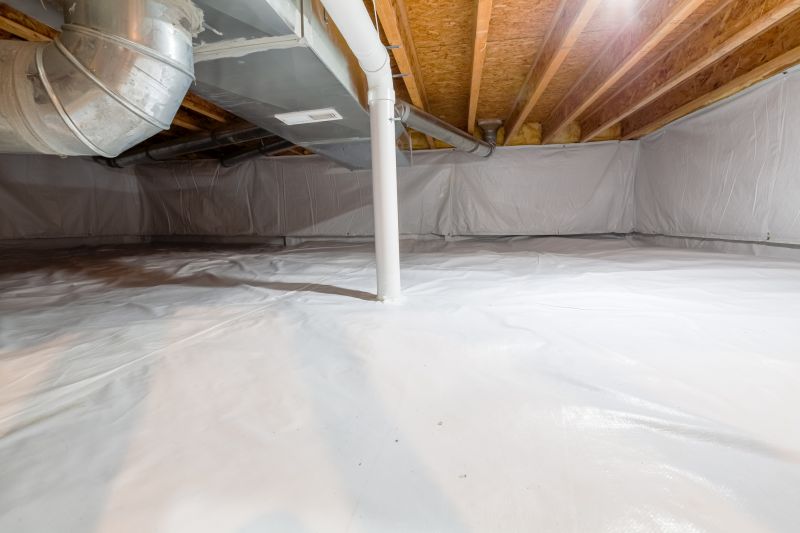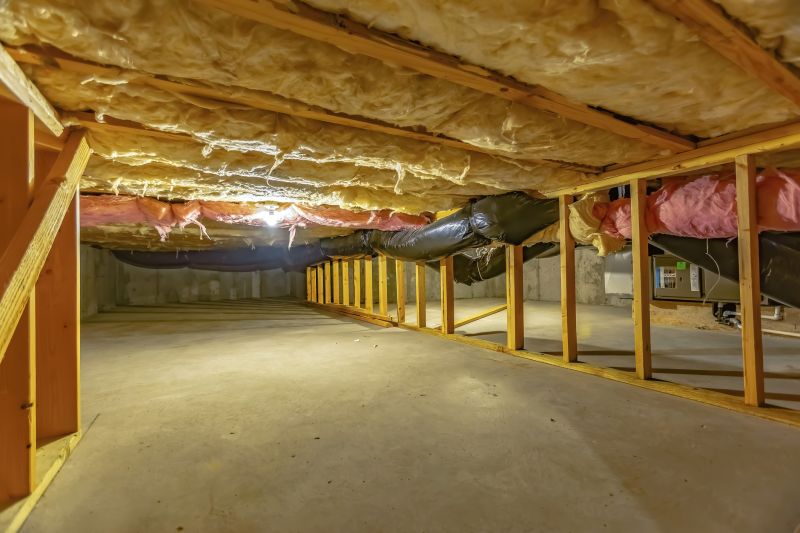Transform Your Crawlspace into a Dry, Healthy Space
Crawlspace encapsulation is a comprehensive process designed to improve indoor air quality, prevent moisture issues, and protect the structural integrity of a building. Properly encapsulating a crawlspace involves sealing vents, insulating surfaces, and installing vapor barriers to create a controlled environment beneath the home.
Encapsulation reduces mold growth, dust, and allergens, contributing to healthier indoor air quality and minimizing respiratory issues.
Sealing the crawlspace prevents excess moisture infiltration, reducing the risk of wood rot, mold, and pest infestations.
A sealed crawlspace minimizes heat loss, leading to lower energy bills and improved home comfort.
Controlling moisture and pests helps maintain the foundation's stability and prolongs the lifespan of the building.

A fully encapsulated crawlspace with vapor barriers, insulation, and sealed vents.

Illustration of insulation and vapor barrier installation in a crawlspace.

Close-up of vapor barrier being laid on the crawlspace floor.

Sealed vents and insulated walls in a completed encapsulation project.
Neglecting crawlspace encapsulation can lead to serious issues. Excess moisture can cause mold growth, which may result in health problems and structural damage. Unsealed crawlspaces are also susceptible to pests, which can further compromise the home’s foundation and indoor air quality. Additionally, unencapsulated crawlspaces often contribute to higher energy costs due to heat loss and air leaks.
| Issue | Impact |
|---|---|
| Mold Growth | Leads to respiratory problems and structural deterioration. |
| Pest Infestations | Can cause damage to insulation and wood framing. |
| High Energy Bills | Results from air leakage and poor insulation. |
| Wood Rot | Weakens the foundation and flooring. |
| Indoor Air Quality | Decreases due to dust, mold spores, and allergens. |
| Structural Damage | Caused by moisture-related issues weakening the foundation. |
| Pest Entry Points | Increased risk of rodents and insects entering the home. |
| Decreased Home Value | Due to ongoing moisture and pest problems. |


